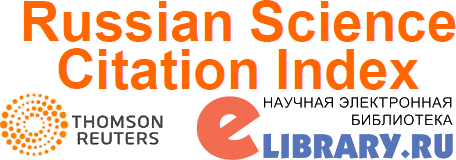Associations of polymorphic loci of candidate genes with the level of sex hormones in patients with endometrial hyperplasia
Background: Endometrial hyperplasia (EH) is one of the most common gynaecological conditions in which sex hormones play an important role in the pathophysiology. The occurrence of hyperestrogenia against the background of a lack of progesterone is of key importance in the induction of EH. Genetic factors related to the level of sex hormones in the body can be essential in the pathogenetics of the disease. The aim of the study:To characterize the hormonal profile of patients with EH and to assess the relationship of polymorphic loci of candidate genes with the level of sex hormones. Materials and methods: In a sample of 66 patients with EH, the associations of nine SNP candidate genes were evaluated (in previously conducted genome-wide studies (GWAS) showed significant associations with the level of sex hormones) with the level of sex hormones in blood serum (estradiol, progesterone, follicle-stimulating and luteinizing hormones, testosterone, prolactin, dehydroepiandrosterone). The association analysis was carried out using the linear regression method in the gPLINK program (transformed values of sex hormone concentrations were used in the calculations) within the framework of three genetic models – allelic, additive and dominant, taking into account covariates and permutation procedures. Results: The following polymorphisms were associated with the level of sex hormones in patients with EH: C>G rs112295236 SLC22A10 (estradiol; β=-0.647, pperm≤0.013), T>C rs148982377 ZNF789 (testosterone; β=-0.870 – -0.917, pperm≤0.021 and progesterone; β=1.051 - 1.571, pperm≤0.049) and G>T rs34670419 ZKSCAN5 (testosterone; β=-0.870 – -0.934, pperm≤0.013 and progesterone; β=1.025, pperm≤0.041), T>A rs11031002 FSHB (follicle stimulating hormone; β=0.466, pperm=0.050) and T>C rs11031005 FSHB (follicle stimulating hormone; β=0.469, pperm≤0.050), C>T rs727428 SHBG (luteinizing hormone; β=-0.335 – -0.357, pperm≤0.050), C>T rs1641549 TP53 (follicle stimulating hormone; β=-0.295 – -0.373, pperm≤0.049 and luteinizing hormone; β=-0.319 – -0.362, pperm≤0.033). Associations with the concentration of sex hormones of the following haplotypes were revealed: testosterone – TG*rs148982377-rs34670419 (β=0.952, pperm=0.001) and CT*rs148982377-rs34670419 (β=-0.858, pperm=0.042); progesterone – CT*rs148982377-rs34670419 (β=1.570, pperm=0.029) and TG *rs148982377-rs34670419 (β=-1.030, pperm=0.047); follicle stimulating hormone – AC*rs11031002-rs11031005 (β=0.466, pperm=0.050) and TT*rs11031002-rs11031005 (β=-0.466, pperm=0.050).Conclusion: GWAS-significant polymorphic loci of candidate genes are associated with the level of sex hormones in patients with EH.
Churnosov VI. Associations of polymorphic loci of candidate genes with the level of sex hormones in patients with endometrial hyperplasia. Research Results in Biomedicine. 2025;11(2):243-262. Russian. DOI:10.18413/2658-6533-2025-11-2-0-3





















While nobody left any comments to this publication.
You can be first.